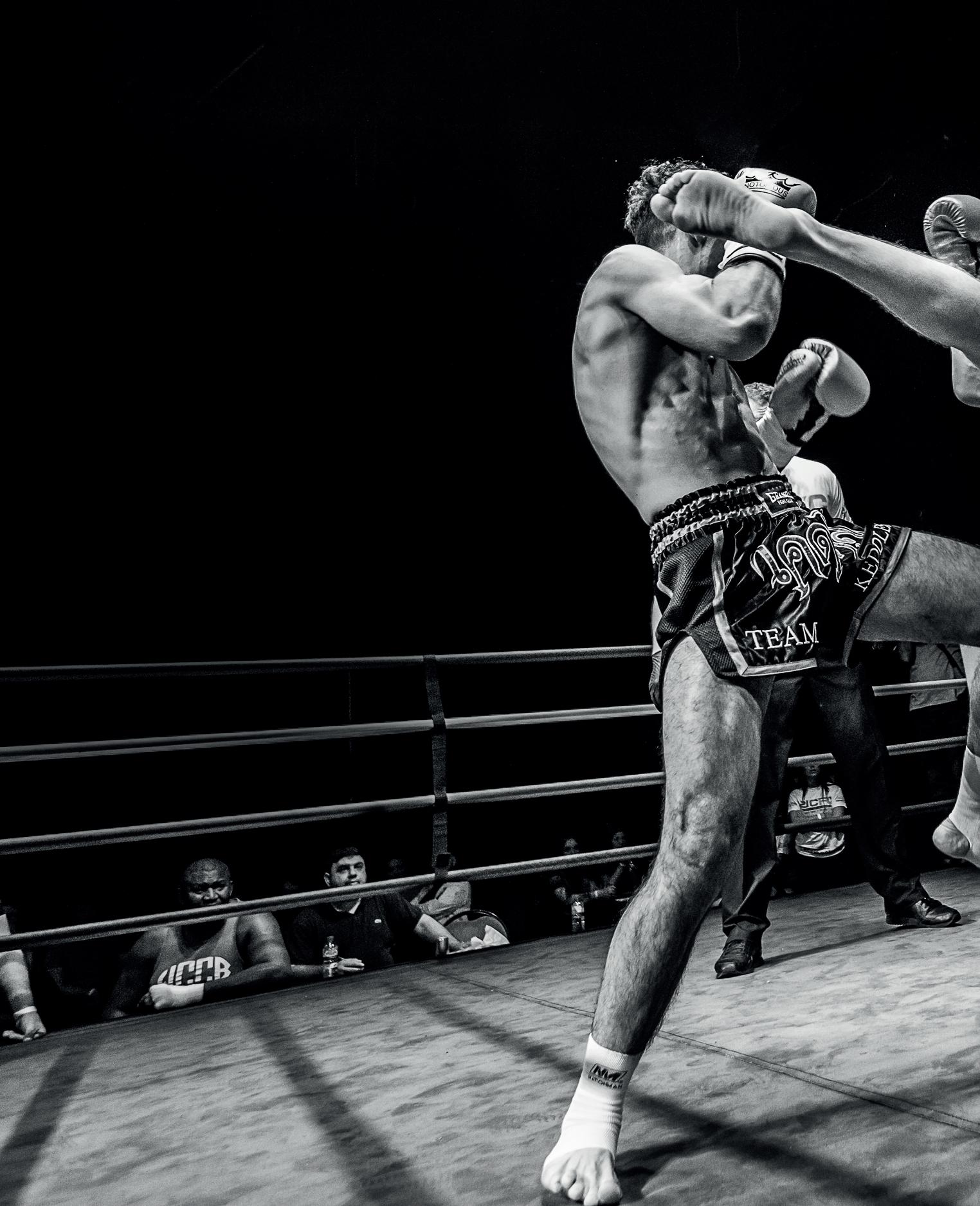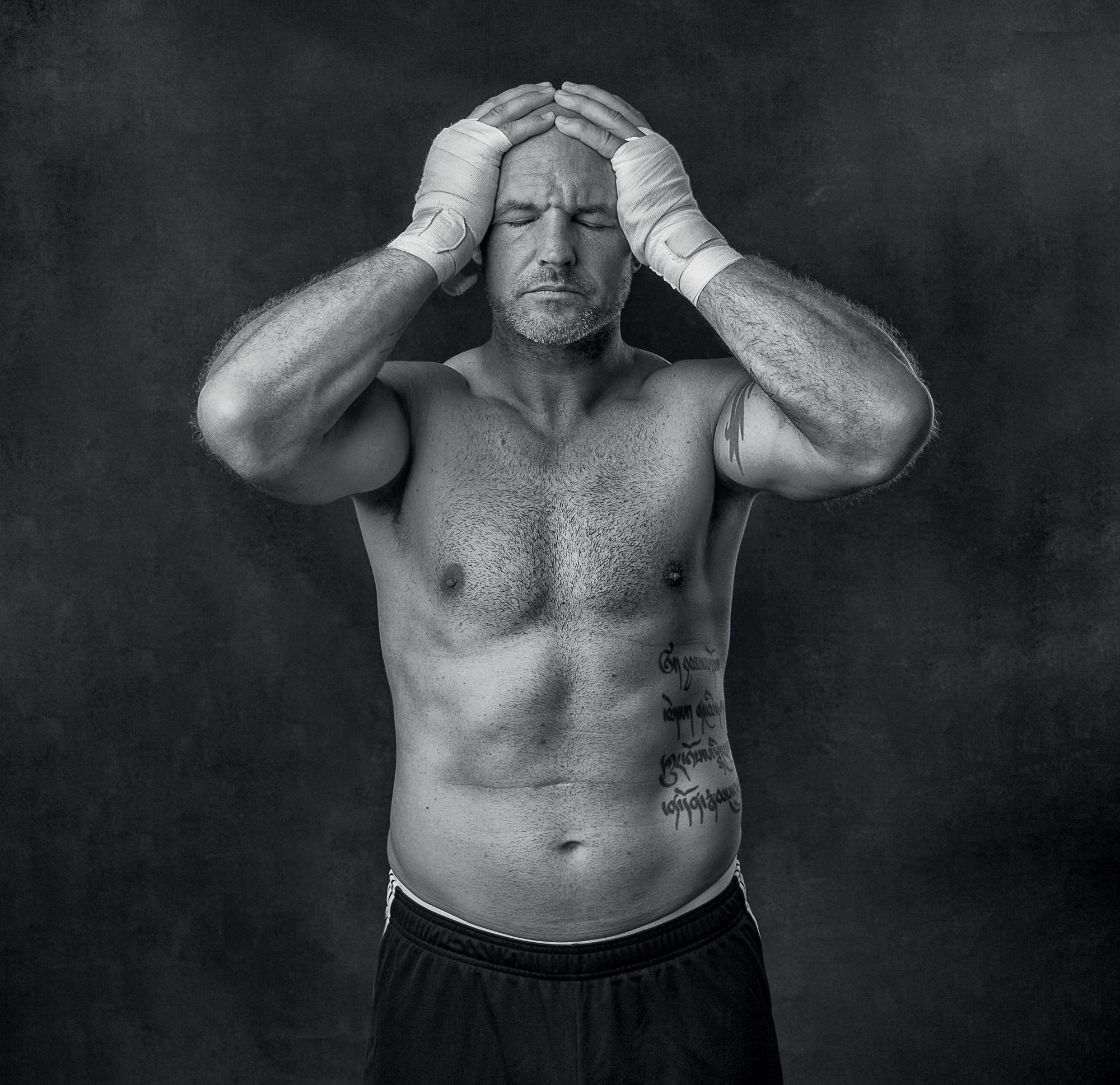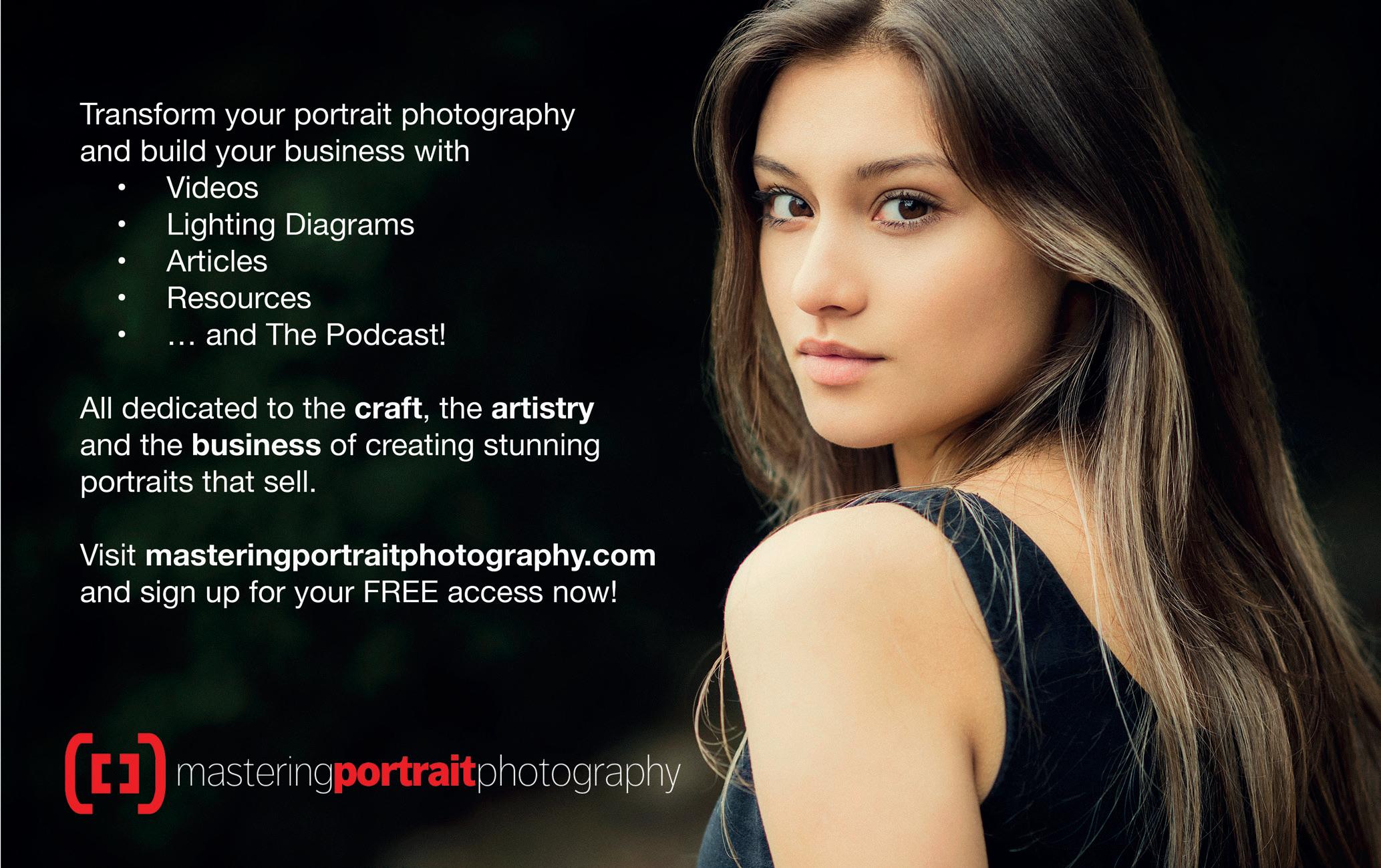
10 minute read
Beyond a Fellowship
BEYOND A FELLOWSHIP
When creating a body of work, the final result may still only be a distant vision. As the journey begins, everyday experiences can unknowingly start to define our ideas and reveal a more profound purpose we didn’t initially set out to reach.
For Aneesa Dawoojee, her recent BIPP Fellowship panel demonstrated just this, as a project photographing her local Muay Thai gym finished exploring subjects rooted deeply within herself and her community.
Describing her panel, Aneesa says, “This is a piece of work on life, humanity, cultural diversity and belonging. A community of individuals in South London who do not see colour, but are united by other commonalities, such as the love of sport, finding a family, loss, trauma and hardships”.
Portraying organic and authentic accounts of people was essential to the project; therefore, building a genuine connection with her subjects became a vital part of the process. The common thread was Muay Thai, an ancient martial art originating from Thailand. Amongst the raw brutality of the combat, the sport promotes honour and respect between opponents through ceremonial traditions displayed at fights.
Growing up in Lambeth, South London, Aneesa practised Muay Thai from an early age, initially as a form of self-defence; however, the gym would become a place of belonging, as it did for the people in her photographs.
Behind the ‘fighter’ persona, social, cultural and political commonalities further relate Aneesa to her subjects, which became ignited after the tragic death of George Floyd, “BLM affected everyone in the panel differently. My work significantly changed at this juncture. The nature of the shoots went from joyous or action fight shots to more softer, subtle non-verbal language.”
“Lambeth is one of the most diverse boroughs in London. There are more people from multi-cutural and mixed-heritage backgorunds in this panel because of the way immigrants arrived historically into the area.” Born to immigrant parents, Aneesa says, “Immigrant family history can be complex, and many tend not to overshare, so whilst we have a lot of strength and spirit on the outside, there is a lot of pain in the heart that stays inside. This is part of the drive behind my photographs.”
“For me, this project was a necessity to show unity through emotion. My mentors saw my inner struggles and difficulty to express my true self. Two of them suggested that a personal project to express myself visually might help, and without fully realising it, this project unfolded from work I was already creating. This whole process was like therapy, and it brought me even closer to my immediate community”.
She say’s that her “practice of representing disadvantaged and underrepresented people in previous roles enabled me to ask the type of questions to help clients to expose a rawness about themselves.”
Before becoming a photographer, Aneesa studied History and Politics, and then Conflict Resolution and Mediation as a postgraduate. After leaving education, she spent most of her career with a homeless charity, Alone in London, where she first picked up a camera. “I started photographing images for the annual and quarterly reports after wanting to change the stereotypical photographs showing young people in doorways looking depressed.”
Instead, Aneesa captured people acting naturally and worked towards changing the negative visual narratives connected to homelessness, “The psychology
Shanelle ‘The Nightmare’ Dyer
WKO 2019 World Champion WKU 2018 K1 World Silver MedalistWKA 2016 K1 Silver Medalist at Southern Region TournamentWKU 2017 British K1 Open Silver MedalistWKU 2017 European Championship K1 Bronze Medalist Iska 2013 World Muay Thai Champion
Image above: Shanelle experienced tragedy at a young age after a good friend was stabbed and killed by his brother on his 30th birthday. The friend had been in and out of jail but had used fighting to clean up his life. In this image, she is holding his picture as a mark of respect. Mixed African and West Indian, Shanelle lives with her four sisters, two brothers and parents. They are close, like a team - with the four sisters sharing one room. Since 11 years old, she has been fighting, with a mantra of “eat, sleep and train”. The gym is like an extended family, full of people she can talk to and know her. Shanelle has now become a role model for the young generation of fighters, “I come from the same place as them, from London, same situation, they probably see me as a role model and inspiration...The gym is somewhere to get away, and somewhere to escape, cos a lot of people don’t have amazing situations going on in their lives - we need places like this around London so we can save a lot of children.”
learnt at the homeless charity helped to get people to see the best possible vision of themselves. To give each person a sense of pride of being part of something that is more than a photograph.”
When creating a distinct image style, the same considered approach continued - as understanding how to light all skin colours so the pictures could sit together with the same tonality and posing subjects correctly became paramount.
Inspiration derived from traditional artists and painters who formed her aesthetic vision and philosophy, “I believe we are in a period of change, just like in the renaissance period. This is why I have chosen to light the subjects in a similar style of light but with contemporary content.”
“Talking with the BIPP Fellows and academics gave me such a good understanding of other authors whose work is relatable to mine; they helped to articulate my beliefs, my storytelling and the execution of it.”
“I think that the writing process I went through was probably one of the best skills I learned. We talk about improving as a photographer, but it takes you further; you improve as a writer. It’s the bigger part of the picture; it’s the thought and understanding behind what you are doing.”
Beyond qualifications, Aneesa has begun the project’s next phases and continues shooting her series in the hopes to communicate it to the

wider public. Unexpected opportunities have also started to unfold, “It has changed things. The Fellowship and the shortlist for the RPS International Exhibition have helped the work be seen on larger platforms. But most of all, the youths I am connected to may now see that anyone can achieve something as incredible as this - it can give them hope. It makes the hard work worth it”.
After seeing her work online, a coordinator from a creative arts festival, Streatham Festival, asked Aneesa to head up a programme teaching photography to young people. More commissions emerged to cover Muay Thai events and capture fighter portraits. While an opportunity arose to run an online Masterclass with Wex Photo & Video, talking about her photography journey led to her photograph being showcased at Wex’s ‘Women in Industry’ exhibition at The Photography Show 2021. Aneesa says, “the significance of the image placed next to Nelson Mandela meant a lot to the fighter, Shanelle, and myself. We were both emotional and grateful to Wex for how it was curated”.

“The opportunities don’t feel real, especially as I had never really shown my work beyond my clients and friends just a year ago. It’s amazing - it ties in with everything I’ve always wanted to do. My two career paths have literally touched in the middle.”
Firefighter Ricky Nuttall

After Grenfell, Ricky suffered from severe PDSD; the arduous road to recovery brought a new perspective and purpose to his life. The heroic firefighter now dedicates his time as a mental health advocate and public voice, focusing on raising awareness of the importance of social and workplace mental health and well-being.
Extract from Aneesa’s interview with Ricky:“One of the poignant stories from my time at Grenfell and something that impacted me hugely was actually kind of to do with this project in many ways.
We’d been at the fire all night, and all morning, it was around midday we were leaving, and at this point, having been in the tower three times and seeing what was going around us, it’s a very traumatic situation emotional environment to be immersed in, and as we were leaving reluctantly, as we didn’t want to go, but we had to, we were walking back to the fire engine, and a black guy was walking down the roads towards us, baseball cap on and hood up - your Daily Mail stereotypical ‘this guy is going to rob you’ image. g To be honest with you, I looked at him walking down the middle road with intent in his face directly towards us, and at this point, because of the loss of lives involved in the incident, I wasn’t sure if he was going to be angry or ask an awkward or difficult question about where a person was.
As he got near us, he pulled his hood back from his head, and he looked up and had tearful eyes, and he opened his arm and wrapped them around us and said, ‘thank you’. It still impacts me now; it gives me goosebumps. It was one of the moments when you realise -we’re judging people constantly. And the black and white of it is that we’re all the same; that guy wanted to hug us because he could see the pain on our faces, and he probably needed a hug because I could definitely see the pain on his face.”


CLEMENCY WRIGHT

In July and August, I delivered four sessions for BIPP members on the topic of Keywording. The course was designed to help support photographers who are new to Keywording, as well as those looking to enhance current practice. Built around illustrations and demonstrations, the course intentionally set out to demystify this topic and provide practical solutions that are easily actionable.
Around 10 photographers form varying backgrounds and specialisms signed up to the course. We started with an Introduction to Keywording. It’s hugely beneficial to ensure people are aware of what keywording is, why it is used, and what the benefits are, before launching into any training. Since we had a range of photographers working across different genres, the material was designed to accommodate all levels of understanding.
Session 2 addressed the Keywording Process. I noticed that, at this stage, photographers were starting to piece together the information learnt and relate it to their own work.
I always encourage photographers to ask any questions they have about keywording for their own particular image collections. Session 3 explored ways of “Optimising Keywords for Customer Engagement”. Photographers from different specialisms require different methods, tools and techniques to optimise Keywording, and so we discussed this in more detail during the slideshow.
The final session was a Practical Keywording exercise where photographers could have a go at Keywording themselves. This is a fantastic way to apply the theory gained and put it into practise.
We looked at a selection of 4 different images providing a good selection of styles and themes to work on. We used the online collaborative tool “Mural” to present the images, and Keyword them live as a group. We spent around 15 minutes on each image and photographers used the Chat function in Zoom as a way to send in their Keyword suggestions.
Live keywording is a great way to involve participants and consolidate learning. We generated a large number of Keyword suggestions which I then applied to the images, explaining and annotating as we went along.
This “live” Keywording approach is the best way for people to ‘take in’ what they’ve learnt. Whilst Keywording is a subject that can be explained through documentation and demonstration, there is no better way to learn than by having a go!
Key Takeaways
Keywording benefits anyone who produces commercial images, or publishes images on their website, online portfolio and social media channels.
As a photographer, your work is the primary tool to attract and engage potential customers. You only have one chance to make a first impression. But if your photos aren’t correctly keyworded, then you might be ‘lost’ online and miss out on sales opportunities as a result. Keywords improve the visual impact of your business and connect you with potential customers.










